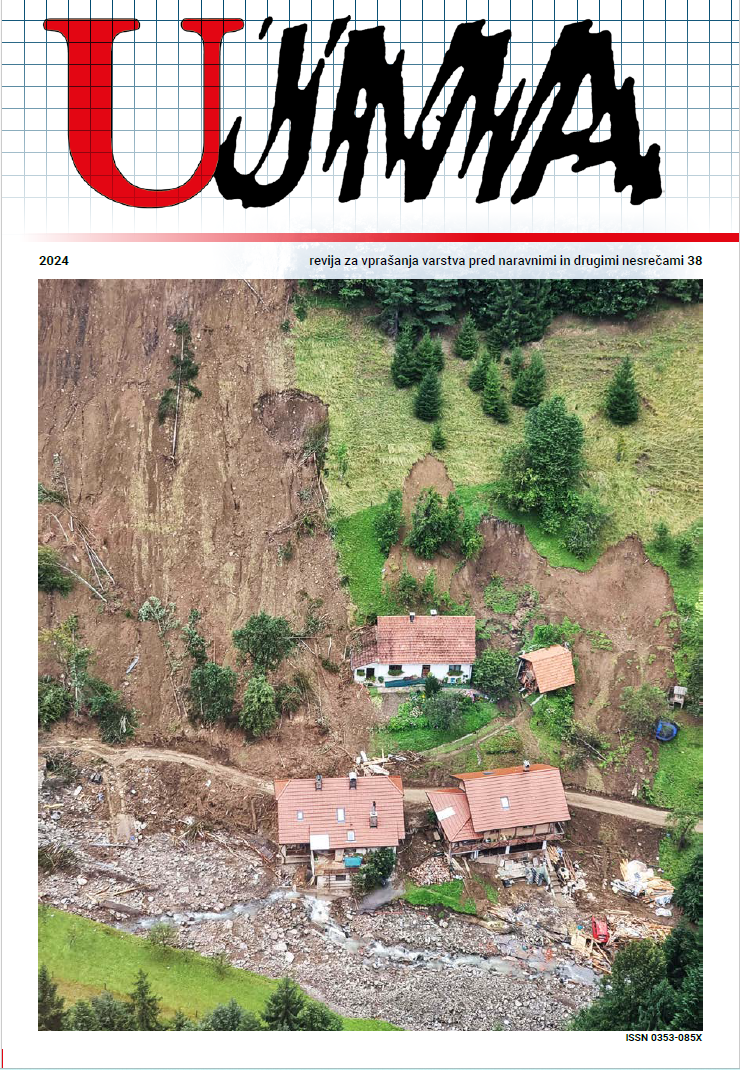SPONTANO PROSTOVOLJSTVO
Povzetek
V Sloveniji smo bili priča številnim naravnim nesrečam, ki krojijo življenja ljudi na prizadetih območjih. Poplave, potresi, neurja s točo in plazovi so poleg uničenja sprožili tudi neznansko željo po pomoči s strani posameznikov – spontanih prostovoljcev. Pregledni članek obravnava pojav spontanega prostovoljstva, tako da pojasni njegove značilnosti tako z motivi kot z vedenjskimi vzorci ljudi, ki se znajdejo na kraju, ki ga je prizadela naravna nesreča. Raziskovalci so v zadnjih desetletjih zaznali več arhetipov konvergenčnega vedenja ljudi, ki jih je dobro poznati pri načrtovanju odziva spontanih prostovoljcev na naravne in druge nesreče. Predstavljenih je tako pet prednostih področij – lokalne posebnosti, koordinacija, komunikacija, usposabljanje in varnost, ki jim je dobro posvetiti pozornost pri upravljanju spontanih prostovoljcev, kot tudi izzivi, ki jih ta vrsta neprecenljive pomoči predstavlja za vodje odziva. Navajamo tudi izzive za sisteme vodenja odziva, glede katerih bi bilo smiselno ukrepati v prihodnje. Boljše poznavanje pojava spontanega prostovoljstva bo prispevalo k informiranemu upravljanju in koordinaciji spontanih prostovoljcev tako s strani organizacij, vključenih v Civilno zaščito, kot tudi morebitnih lokalnih koordinatorjev novonastalih skupin.
Literatura
Spontaneous Volunteers (AIDR 2017). https://knowledge.aidr.org.au/media/5618/aidr-communities-responding-to-disasters-planning-for-spontaneous-volunteers-handbook.pdf
Barut, D. (2023). Primer praktične uporabe sistema vodenja odziva na dogodek v Občini Logatec. Ujma, 37, 234–239.
Bunker, D., Mirbabaie, M., Stieglitz, S. (2017). Convergence Behaviour of Bystanders: An Analysis of 2016 Munich Shooting Twitter Crisis Communication.
Corporation for National and Community Service, Hands on Network, & Points of Light Foundation (2018). Managing Spontaneous Volunteers in Times of Disaster (Participant Materials). Corporation for National and Community Service. https://www.humanitarianlibrary.org/sites/default/files/2020/08/hon-cncs-msvtd_participant_materials.pdf
Daddoust, L., Asgary, A., McBey, K. J., Elliott, S., Normand, A. (2021). Spontaneous volunteer coordination during disasters and emergencies: Opportunities, challenges, and risks. International Journal of Disaster Risk Reduction, 65. https://doi.org/10.1016/j.ijdrr.2021.102546
EESC (2021). New trends in the development of volunteering in the European Union -Study. https://doi.org/10.2864/267828
Hutton, N. S., Mumford, S. W., Saitgalina, M., Yusuf, J. E., Behr, J. G., Diaz, R., Kiefer, J. J. (2021). Nonprofit Capacity to Manage Hurricane-Pandemic Threat: Local and National Perspectives on Resilience during COVID-19. International Journal of Public Administration, 44 (11–12), 984–993. https://doi.org/10.1080/01900692.2021.1922439
Jaime, D., Martínez, P., Contreras, D., Bonacic, C., Marín, M. (2023). Volunteers’ capabilities and their perceived satisfaction and performance in volunteering tasks during socio-natural disasters. International Journal of Disaster Risk Reduction, 85. https://doi.org/10.1016/j.ijdrr.2022.103510
Kebe, R. (2007). Arhetipi in kolektivno nezavedno. Kairos – slovenska revija za psihoterapijo, 1 (3–4). https://www.kairos.skzp.org/index.php/revija/article/view/28
Koolen-Maas, S. A., Meijs, L. C. P. M., van Overbeeke, P. S. M., Brudney, J. L. (2023). Rethinking Volunteering as a Natural Resource: A Conceptual Typology. Nonprofit and Voluntary Sector Quarterly, 52 (1_suppl), 353S-377S. https://doi.org/10.1177/08997640221127947
Malešič, M. (2020). Improviziran odziv na nesrečo. Ujma, 34–35, 299–304.
Orloff, L. (2011). Managing Spontaneous Community Volunteers in Disasters. CRC Press. https://doi.org/10.1201/b11078
Paciarotti, C., Cesaroni, A. (2020). Spontaneous volunteerism in disasters, managerial inputs and policy implications from Italian case studies. Safety Science, 122. https://doi.org/10.1016/j.ssci.2019.104521
Paciarotti, C., Cesaroni, A., Bevilacqua, M. (2018). The management of spontaneous volunteers: A successful model from a flood emergency in Italy. International Journal of Disaster Risk Reduction, 31, 260–274. https://doi.org/10.1016/j.ijdrr.2018.05.013
Points of Light Foundation, N. U. F. (2018). Managing Spontaneous Volunteers in Times of Disaster: The Synergy of Structure and Good Intentions. Points of Light Foundation. https://www.humanitarianlibrary.org/sites/default/files/2020/08/ManagingSpontaneousVolunteers.pdf
Rodríguez-Espíndola, O., Albores, P., Brewster, C. (2018). Disaster preparedness in humanitarian logistics: A collaborative approach for resource management in floods. European Journal of Operational Research, 264(3), 978–993. https://doi.org/10.1016/j.ejor.2017.01.021
Sperling, M., Schryen, G. (2022). Decision support for disaster relief: Coordinating spontaneous volunteers. European Journal of Operational Research, 299(2), 690–705. https://doi.org/10.1016/j.ejor.2021.08.022
Twigg, J., Mosel, I. (2017). Emergent groups and spontaneous volunteers in urban disaster response. Environment and Urbanization, 29(2), 443–458. https://doi.org/10.1177/0956247817721413
United Nations (2021). State of the World’s Volunteerism Report 2022 Building Equal and Inclusive Societies. https://www.un-ilibrary.org/content/books/9789210012416
Van Wassenhove, L. N. (2006). Blackett memorial lecture humanitarian aid logistics: Supply chain management in high gear. Journal of the Operational Research Society, 57(5), 475–489. https://doi.org/10.1057/palgrave.jors.2602125
Verhoeven, P., Tench, R., Zerfass, A., Moreno, A., Verčič, D. (2014). Crisis? What crisis? How European professionals handle crises and crisis communication. Public Relations Review, 40(1), 107–109. https://doi.org/10.1016/j.pubrev.2013.10.010
White, H. P. (2016). Understanding the role of spontaneous volunteers in disaster: The case study of the World Trade Centre on 9/11.
Prenosi
Objavljeno
Številka
Rubrike
Licenca
Avtorske pravice (c) 2025 Ujma

To delo je licencirano pod Creative Commons Priznanje avtorstva-Nekomercialno-Brez predelav 4.0 mednarodno licenco.
Članki so na voljo javnosti pod licenco Creative Commons Priznanje avtorstva-Nekomercialno-Brez predelav 4.0 Mednarodna (CC BY-NC-ND 4.0).


